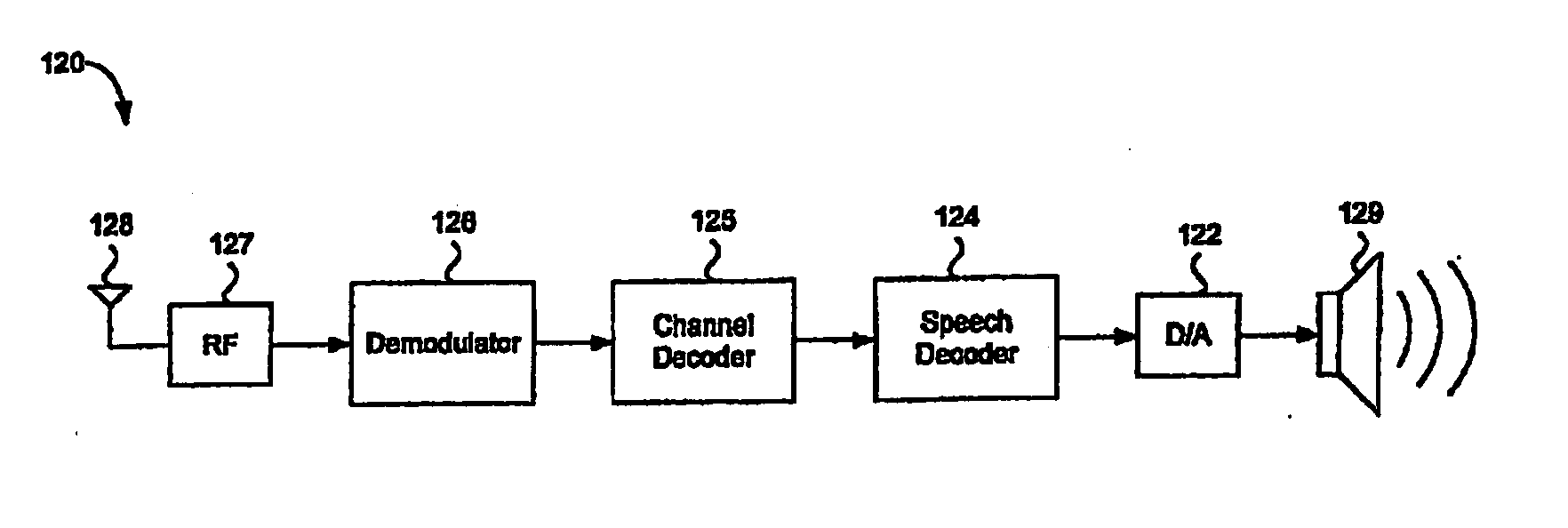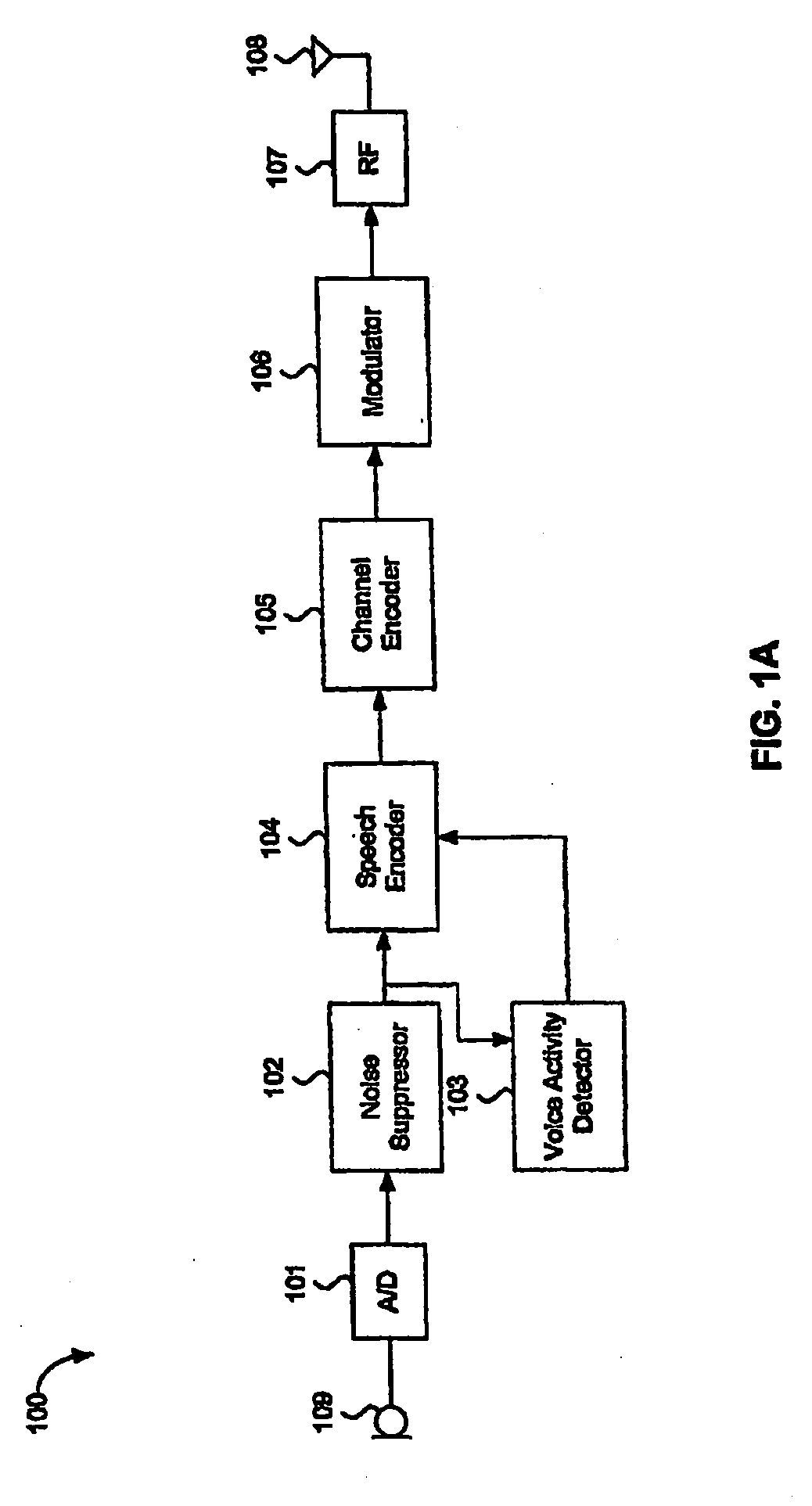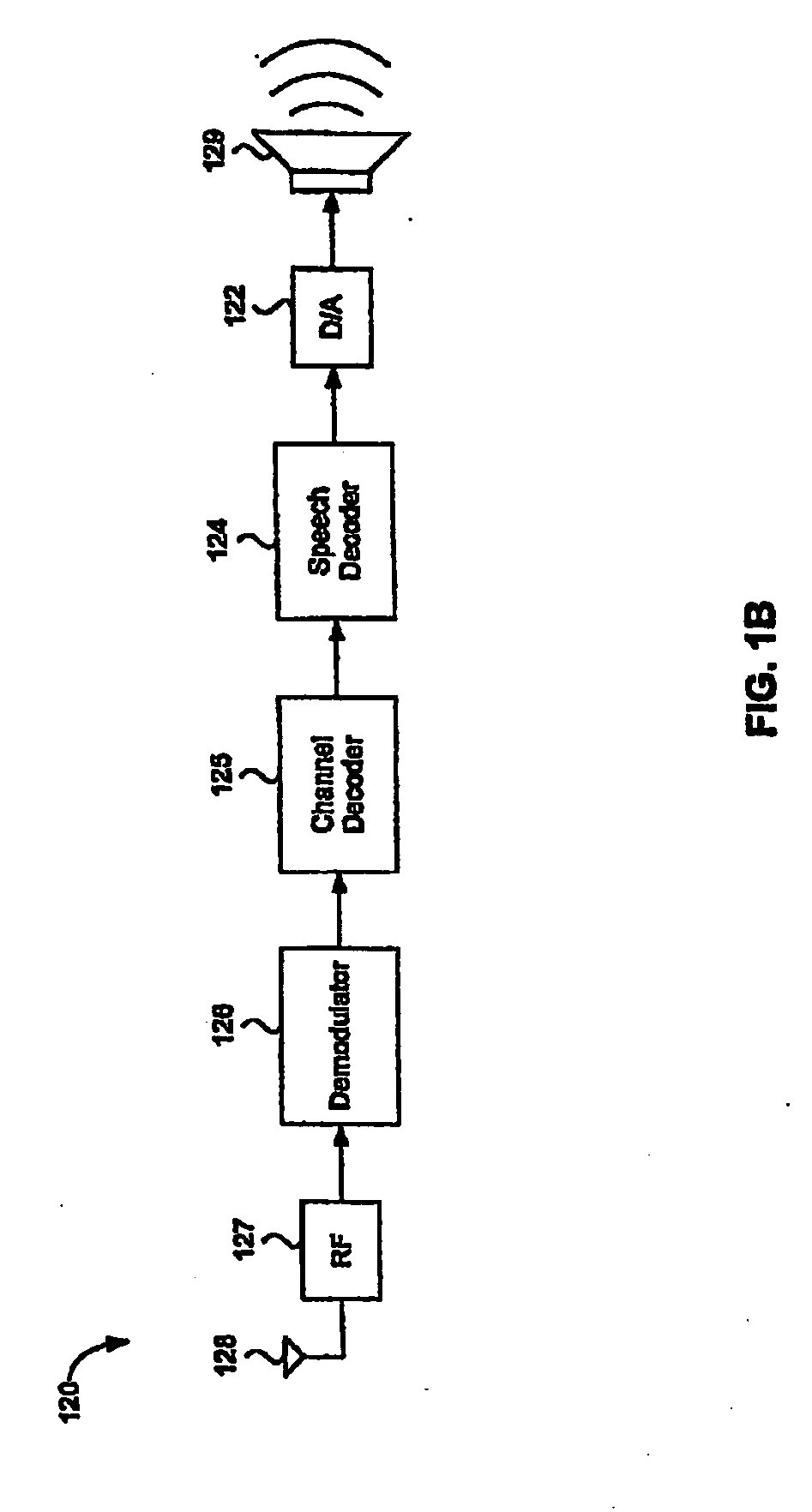Echo cancellation in telephones with multiple microphones
a technology of multiple microphones and telephones, applied in the field of telephones, can solve the problems of affecting and affecting the operation of the telephone, so as to achieve the effect of improving the performance of the telephone during the operation
- Summary
- Abstract
- Description
- Claims
- Application Information
AI Technical Summary
Benefits of technology
Problems solved by technology
Method used
Image
Examples
first embodiment
A. First Embodiment
[0170] Before describing a first embodiment of the present invention, it is helpful to describe an example of acoustic echo that occurs when a telephone is used in a speaker-phone mode.
[0171] When used in a speaker-phone mode, a loudspeaker of a near-end telephone emits a sound pressure wave corresponding to the voice of a far-end user. This sound pressure wave allows the near-end user to hear the far-end user's voice. However, this sound pressure wave can also be picked-up by a microphone of the near-end telephone. In this way, the near-end telephone can transmit the far-end user's voice back to the far-end user in the form of an echo.
[0172] To reduce such an echo transmitted by the near-end telephone, an acoustic echo canceller (AEC) can be used. An echo canceller can potentially reduce the volume of an echo to make it less annoying and / or distracting. An echo canceller in accordance with an embodiment of the present invention can achieve improved echo cancell...
second embodiment
B. Second Embodiment
[0186] As mentioned above, in a second embodiment, the multiple microphones of the telephone can be configured as an adaptive microphone array and used to reduce the effects of room reverberation and / or acoustic echo. FIG. 29 is a functional block diagram of a transmit path 2900 and a receive path 2950 of a telephone in accordance with this second embodiment. Transmit path 2900 includes an array of microphones 2910 similar to microphone array 2100 of FIG. 21, a DSP 2925 similar to DSP 2105 of FIG. 21, an encoder 2920 similar to encoder 2620 of FIG. 26, and a transmitter 2930 similar to transmitter 2630 of FIG. 26. Receive path 2950 includes a receiver 2960 similar to receiver 2660 of FIG. 26, a decoder 2970 similar to decoder 2670 of FIG. 26, and a speaker 2980 similar to speaker 2680 of FIG. 26.
[0187] Each microphone in microphone array 2910 is configured to receive sound waves emanating from the surrounding environment and to generate an audio signal correspon...
PUM
 Login to View More
Login to View More Abstract
Description
Claims
Application Information
 Login to View More
Login to View More - R&D
- Intellectual Property
- Life Sciences
- Materials
- Tech Scout
- Unparalleled Data Quality
- Higher Quality Content
- 60% Fewer Hallucinations
Browse by: Latest US Patents, China's latest patents, Technical Efficacy Thesaurus, Application Domain, Technology Topic, Popular Technical Reports.
© 2025 PatSnap. All rights reserved.Legal|Privacy policy|Modern Slavery Act Transparency Statement|Sitemap|About US| Contact US: help@patsnap.com



